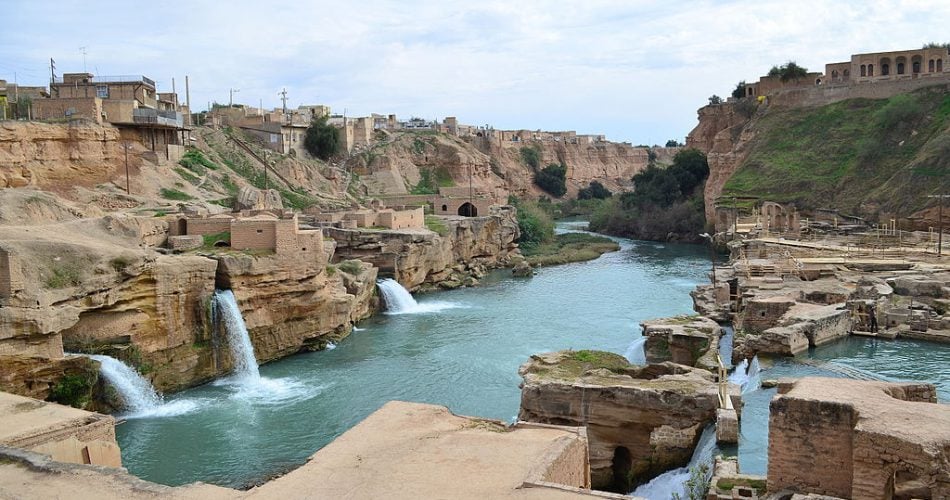
At present, Iran uses 83% of its total renewable freshwater resources, whereas international norms suggest a ceiling of 40% to ensure environmental sustainability and to meet the rising demand of a growing population (Table 1).
In 2017, 29347 MCM of large reservoir dams has been consumed, 48.5% of which belong to the agricultural consumptions.[1]
Figure 1 . The type of water use of Large Reservoir Dams.[2]
Water consumption
The government heavily subsidizes water use in both the agriculture and domestic sectors, resulting in much lower charges than the actual cost of provision.
60% of urban demand is provided by surface water, while groundwater resources provide almost 40%. The water supply network covers about 99.4% of the country. In Tehran and some other major cities, the per capita consumption reaches as high as 300 litres per day.[3]
Figure 2 . the agriculture and urban water sectors consumption from 1963 up to 2015.[5]
Water use in agriculture
In 2015, agriculture consumption of water was about 109.9 billion cubic meters. Groundwater resources provide more than 43% of agricultural demand and 62% of all irrigated lands.[4]
Water demand projections
Since 2007, annual water use has been maintained at the level of 100 BCM, however the share of agricultural water use is expected to drop to 87% from the current level of 91%.
The current total agricultural, municipal and industrial water withdrawal is about 100BCM, of which 41BCM from surface water, 58.8BCM from groundwater (qanats and wells) and 0.2BCM from desalinated water. Agriculture is the biggest consumer of water in Iran, with about 91BCM in 2016.
The domestic and the industrial sectors consumed 7BCM and 2BCM, respectively (Figure 2). These figures are projected to increase for the agricultural and domestic sectors and reach 97BCM and 11.9BCM by 2041 (Figure 1). Although the industrial consumption is expected to decrease to 0.1 BCM, the overall consumption is massively exceeding the 87.68BCM of Iran’s renewable water capacity. This makes Iran’s current water consumption and future projection inordinate (Table 1 and Table 2).
Total surface water and groundwater withdrawal represents almost 83% of the total actual renewable water resources. Use of non-conventional water sources is minimal and limited to the use of desalinated seawater at the petrochemical plants in the Persian Gulf. Treated wastewater is said to be indirectly used in agriculture.
In some towns, albeit in a limited form, raw wastewater is used directly for irrigation, resulting in some health-related problems.[6]
| Quantity (BCM) | Agriculture | Industry, drinking and non-drinking consumption | Minimum environmental need | Total |
| Actual consumption | 91 | 9 | 100 | |
| Ideal consumption within the renewable capacity of resources | 61.71 | 15.19 | 10.78 | 87.68 |
Table 1. Water consumption distribution per sector. [9]
| Quantity (BCM) | Surface water | Groundwater |
| Actual consumption | 41.2 | 58.8 |
| Ideal consumption within the renewable capacity of resources | 39.78 | 37.12 |
Table 2. Water consumption distribution between surface water and groundwater. [10]
[1] The Statistical Centre of Iran, 2019. Iran Statistical Yearbook 1397 (2018 – 2019). Available at https://www.amar.org.ir/english/Iran-Statistical-Yearbook/Statistical-Yearbook-2018-2019
[2] Ibid
[3] Zekri, S. ed., 2020. Water Policies in MENA Countries (Vol. 23). Springer Nature. Available at https://doi.org/10.1007/978-3-030-29274-4
[4] Ibid
[5] Ibid
[6] AQUASTAT, 2008. Country Fact Sheet: Iran. FAO’s global information system on water and agriculture. Available at www.fao.org/nr/water/aquastat/countries_regions/irn/index.stm.
[7] Ibid.
[8] Ibid.
[9] Ibid.
[10] Ibid.
